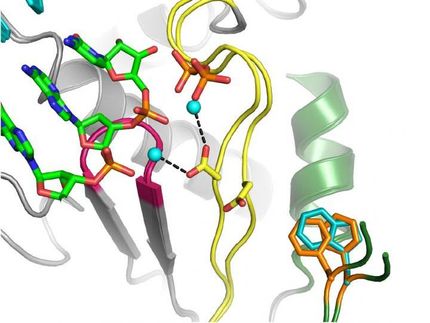Scientists report successful vaccine developed against deadly Nipah virus
Henry M. Jackson Foundation for the Advancement of Military Medicine
A team of federal and university scientists reports a major breakthrough in the development of a highly effective vaccine against the deadly Nipah virus. The results of their study, "A Hendra virus G glycoprotein subunit vaccine protects African green monkeys from Nipah virus challenge," will appear in Science Translational Medicine.
The research team members are a collaborative group of investigators from the Uniformed Services University of the Health Sciences (USU), the University of Texas Medical Branch (UTMB) and Galveston National Laboratory (GNL), the National Institutes of Health's (NIH's) National Institute of Allergy and Infectious Diseases (NIAID) and Rocky Mountain Laboratories (RML), and the Boston University School of Medicine and National Emerging Infectious Diseases Laboratories Institute (NEIDL). The Henry M. Jackson Foundation for the Advancement of Military Medicine, Inc. provides technology transfer assistance in protecting the Nipah and Hendra virus vaccine developed at USU.
Nipah virus and Hendra virus emerged in the 1990s causing serious disease outbreaks in humans and livestock in Australia, Malaysia, Singapore, Bangladesh and India. Recent Nipah outbreaks have resulted in acute respiratory distress syndrome and encephalitis, person-to-person transmission, and greater than 75 percent case fatality rates among humans. The viruses are found naturally in several species of Pteropid fruit bats (flying foxes). The NIH and Centers for Disease Control and Prevention have classified Nipah and Hendra as biothreat agents, and the U.S. Department of Agriculture has characterized them as agriculture threat agents. In fact, the infectious agent of the recent cinematic release "Contagion" was modeled after Nipah virus.
In experiments carried out in African green monkeys at the RML in Hamilton, MT, where there is a high-level safety and security facility for working with live Nipah virus, the team of researchers, under the direction of Heinz Feldmann, M.D., Ph.D., chief of the RML, Laboratory of Virology, demonstrated that immunizing monkeys with a vaccine based on the Hendra virus attachment G glycoprotein afforded complete protection against Nipah virus infection with no evidence of disease.
"These findings are really quite promising and appear to offer a real potential treatment for either Nipah or Hendra virus infection in people," said Christopher C. Broder, Ph.D., professor of Microbiology at USU and study corresponding author.
The vaccine is a soluble portion of the G glycoprotein of Hendra virus, known as Hendra-sG, which mediates viral infection and is produced in the laboratory using molecular techniques. Lead author, Katharine Bossart, Ph.D., a USU alumna and assistant professor in the Department of Microbiology, Boston University School of Medicine, developed the Hendra-sG vaccine while a student in Dr. Broder's laboratory at USU. "Since the vaccine is only a recombinant piece of the virus, it can be produced by itself and purified, and is a type of vaccine known as a subunit, thus making it extremely safe to use," Dr. Bossart said.
Most read news
Organizations
Other news from the department science

Get the life science industry in your inbox
By submitting this form you agree that LUMITOS AG will send you the newsletter(s) selected above by email. Your data will not be passed on to third parties. Your data will be stored and processed in accordance with our data protection regulations. LUMITOS may contact you by email for the purpose of advertising or market and opinion surveys. You can revoke your consent at any time without giving reasons to LUMITOS AG, Ernst-Augustin-Str. 2, 12489 Berlin, Germany or by e-mail at revoke@lumitos.com with effect for the future. In addition, each email contains a link to unsubscribe from the corresponding newsletter.
Most read news
More news from our other portals
Last viewed contents
Psychiatric_advance_directives
Worm-like_chain
Lydia_Pinkham
Freundlich_equation
Diamond_v._Chakrabarty

Daily Visual Balance Check - Cleaning and Leveling
Computed_tomography
Proteolysis
Stora Enso announces startups selected for its second Accelerator Programme
Francis_Crick



















































